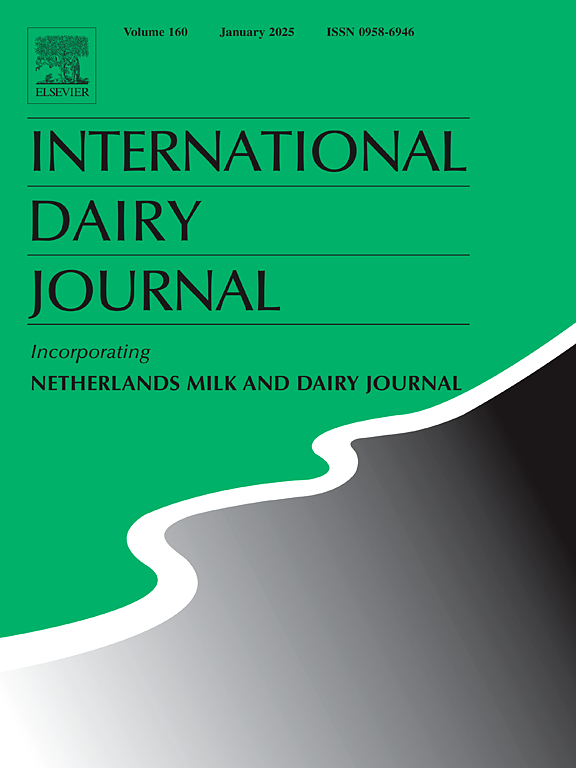Isomerization and hydrolysis of lactose in arginine solution under microwave heating
IF 3.4
3区 农林科学
Q2 FOOD SCIENCE & TECHNOLOGY
引用次数: 0
Abstract
Lactulose is a synthetic disaccharide used as a treatment for constipation and also shows prebiotic properties in humans. In this study, isomerization of lactose to lactulose and hydrolysis of lactose to monosaccharides in an arginine solution were investigated under microwave heating. Increasing the arginine/lactose molar ratio from 0.05 to 0.2 at an initial lactose concentration of 0.2 M resulted in the highest lactulose yield (21.7 %) and monosaccharide yield of 4.9 % after 90 s of heating at 640 W. Varying the initial lactose concentration from 0.1 to 0.4 M did not affect the yield, though productivity increased significantly. The highest lactulose productivity (1369 g/(L·h)) was achieved by heating a 0.4 M lactose solution with an arginine/lactose molar ratio of 0.2 at 800 W for 60 s. Additionally, it was found that using high microwave energy with shorter heating duration (800 W for 60 s) helped suppress browning reactions.
微波加热下精氨酸溶液中乳糖的异构化和水解
乳果糖是一种合成的双糖,用于治疗便秘,在人类中也显示出益生元特性。在微波加热下,研究了乳糖在精氨酸溶液中异构化成乳果糖和水解成单糖的过程。在初始乳糖浓度为0.2 M时,将精氨酸/乳糖摩尔比从0.05提高到0.2,在640 W加热90 s后,乳果糖收率最高(21.7%),单糖收率最高(4.9%)。初始乳糖浓度在0.1 ~ 0.4 M范围内变化不影响产量,但产量显著提高。当精氨酸/乳糖摩尔比为0.2的0.4 M乳糖溶液在800 W加热60 s时,乳果糖产率最高(1369 g/(L·h))。此外,研究发现,使用高微波能量和较短的加热时间(800 W, 60 s)有助于抑制褐变反应。
本文章由计算机程序翻译,如有差异,请以英文原文为准。
求助全文
约1分钟内获得全文
求助全文
来源期刊

International Dairy Journal
工程技术-食品科技
CiteScore
6.50
自引率
9.70%
发文量
200
审稿时长
49 days
期刊介绍:
The International Dairy Journal publishes significant advancements in dairy science and technology in the form of research articles and critical reviews that are of relevance to the broader international dairy community. Within this scope, research on the science and technology of milk and dairy products and the nutritional and health aspects of dairy foods are included; the journal pays particular attention to applied research and its interface with the dairy industry.
The journal''s coverage includes the following, where directly applicable to dairy science and technology:
• Chemistry and physico-chemical properties of milk constituents
• Microbiology, food safety, enzymology, biotechnology
• Processing and engineering
• Emulsion science, food structure, and texture
• Raw material quality and effect on relevant products
• Flavour and off-flavour development
• Technological functionality and applications of dairy ingredients
• Sensory and consumer sciences
• Nutrition and substantiation of human health implications of milk components or dairy products
International Dairy Journal does not publish papers related to milk production, animal health and other aspects of on-farm milk production unless there is a clear relationship to dairy technology, human health or final product quality.
 求助内容:
求助内容: 应助结果提醒方式:
应助结果提醒方式:


